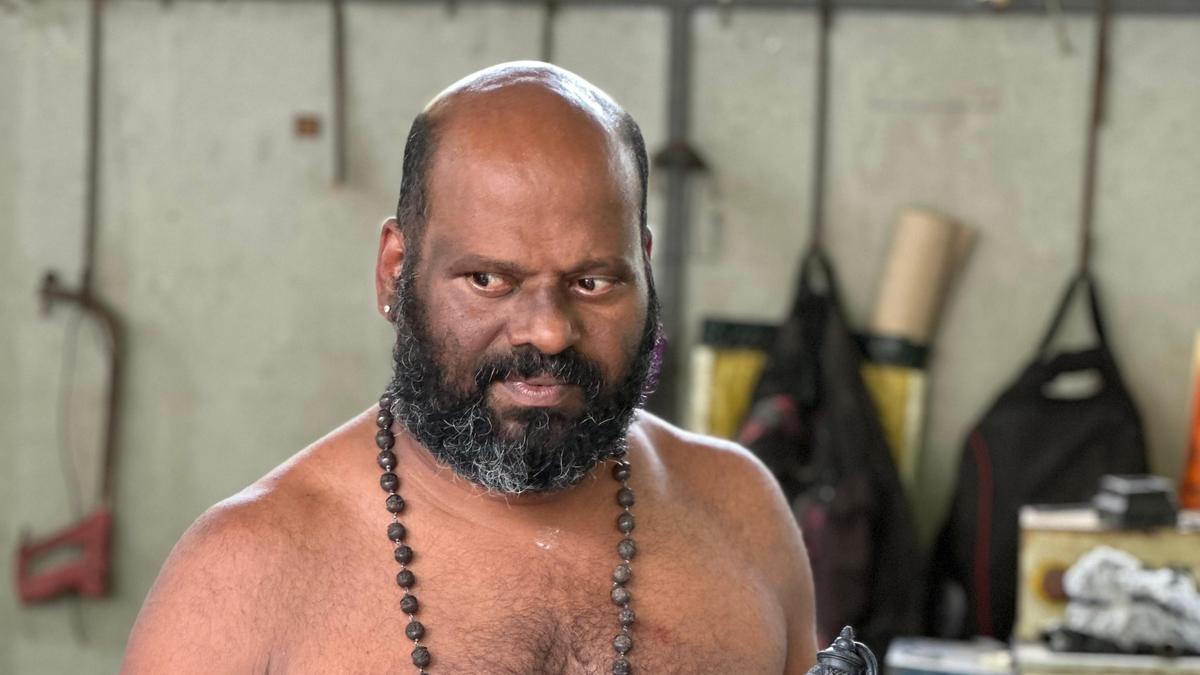
Idol maker Valsan Kunhimangalam’s quest to keep the lost-wax technique alive continues
The Hindu
Valsan Kunhimangalam is one among the few artisans who still practice the ancient lost wax technique of idol making in Kunhimangalam, Kannur, where the centuries-old craft is preserved.
Just over 500 metres away from Ezhimala railway station at Kunhimangalam, Kannur, hidden from the rush of the city, nestled in a residential area with untarred roads flanked by shrubs gradually infiltrating the paths, around 11 artisans are at work under the shade of an asbestos shed, surrounded by heavy machinery and figures of deities cast in metal. The artists or moosaris are engaged in different steps of idol making using a technique which boasts centuries of history, that can even be traced back to the Indus Valley Civilisation, called the lost wax technique.
Among them, sitting cross-legged at the centre, is P Valsan or Valsan Kunhimangalam as he prefers to be called, who has been around metal, mud and the craft that binds them together since he was a child. Once a college lecturer teaching computer science, Valsan, returned to his ancestral trade full time over a decade and half ago, despite doubts from his family members, to keep alive the legacy of the craft with the help of his peers.
After finishing pre-degree, Valsan did a software engineering, and electronics and hardware diploma course. He then joined a private college as a computer science lecturer, where he taught for 10 ten years till he was 34. Even during those days after work, Valsan says, he would spend hours in the shed sculpting idols, lamps and even spittoons among other things.
Unfortunately, as the years progressed, Valsan witnessed his beloved trade lose sheen as artisans gradually moved on to other jobs. Once home to more than 100 artisans, currently, there are around only 30 artisans residing in Kunhimangalam practising the trade of idol making using lost-wax technique.
Ultimately, this saw him returning to sculpting and working full-time for the development of this craft. “When people in the locality stopped doing this work, 13 of us formed a bronze heritage trust, requesting the government to give encouragement to sustain this trade pointing out that the art is indigenous to this region,” says Valsan.
The trust kept petitioning the government and in 2014, the then Minister for Rural Development, Planning, Culture and NORKA, KC Joseph promised to set up a heritage village in Kunhimangalam and the Kerala Folklore Academy was assigned to study more about the village and its indigenous craft under a submission made by Kalliasseri MLA TV Rajesh in the legislative assembly.
In 2018, artisans led by Valsan formed a cluster, Kunhimangalam Bell Metal Heritage Private Ltd. (KBMHPL),with a grant of ₹1.40 crore. Seventy per cent of this allocation was approved by the Union government and the rest by the State government. The grant has been integral in establishing a common facility centre and populating it with machinery to ensure safety for the artisans. Ultimately in the same year, Kunhimangalam was awarded the status of a heritage village by the Kerala state government and the bell metal (a type of bronze) sculpting done by the Moosari community a heritage art.











